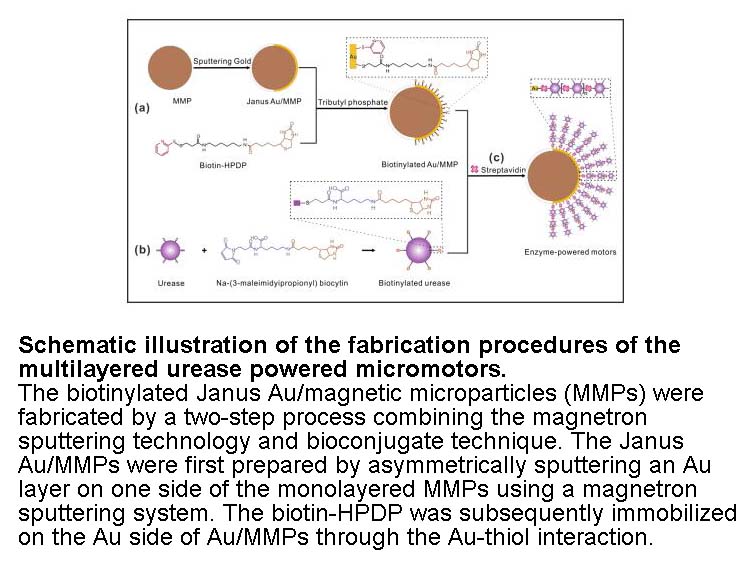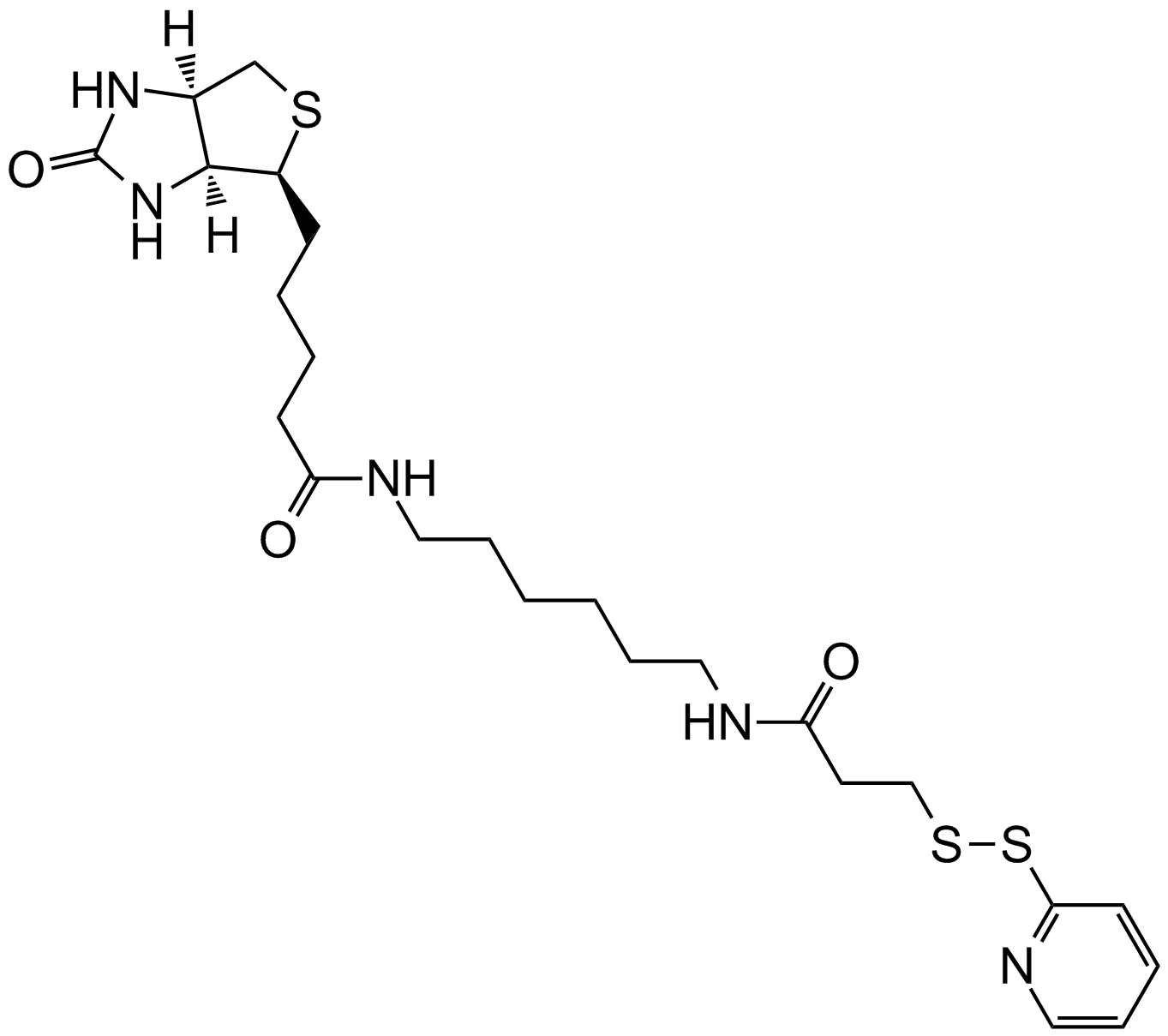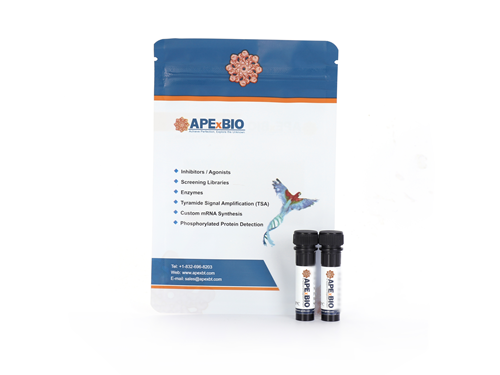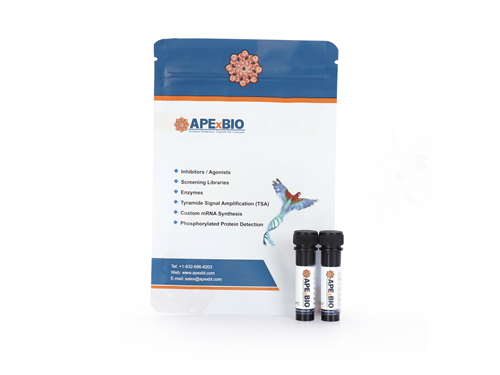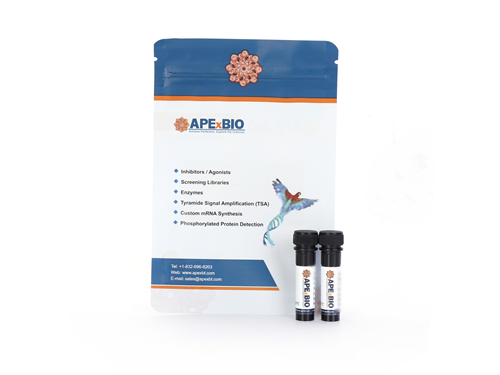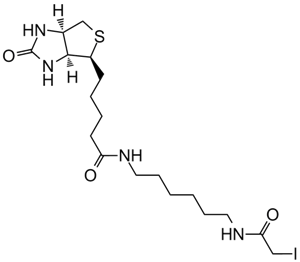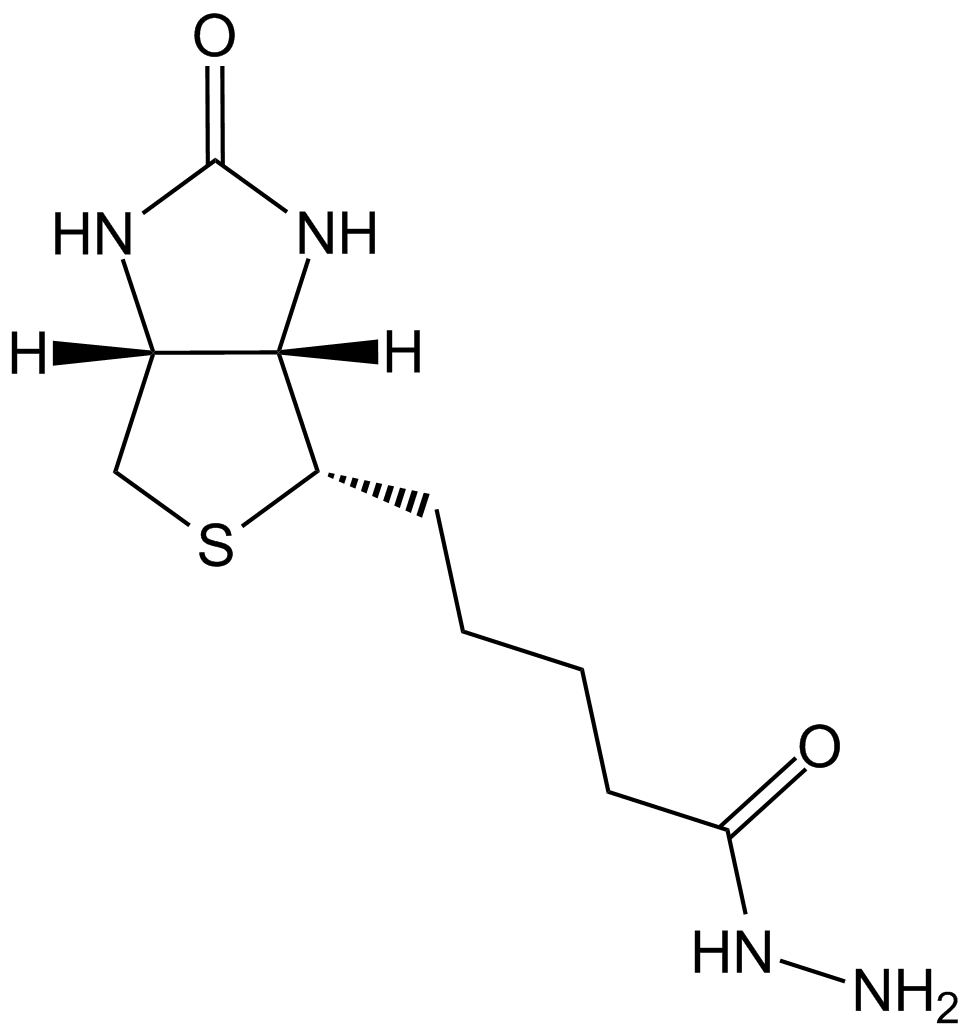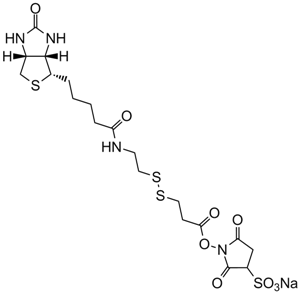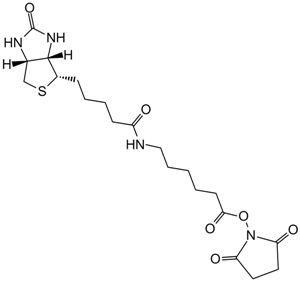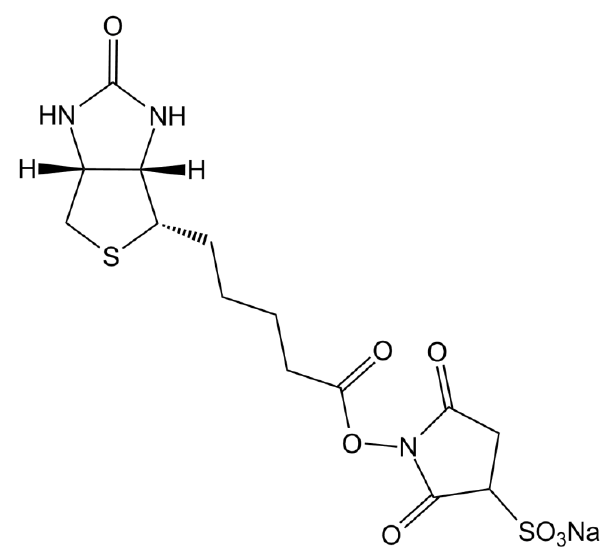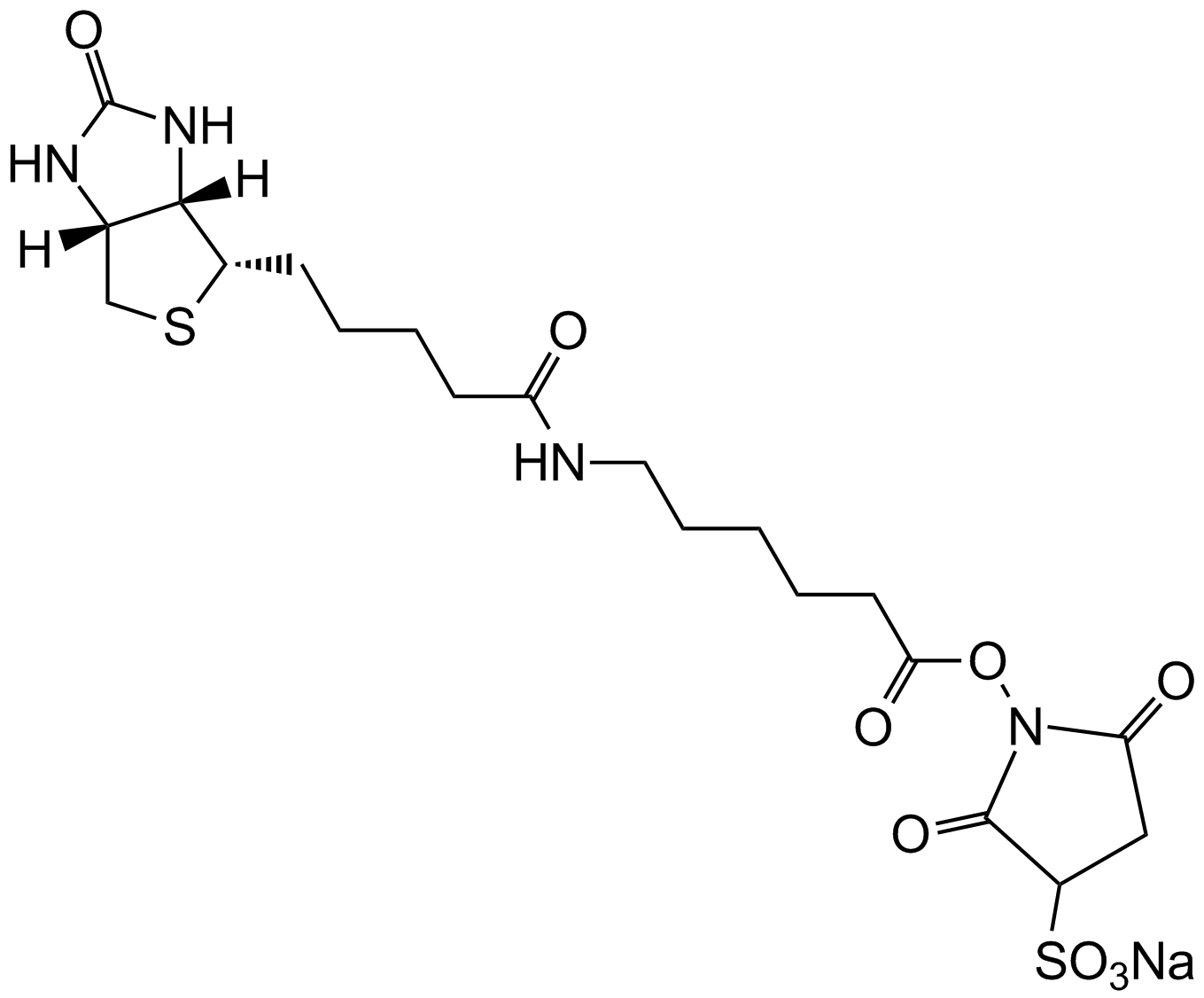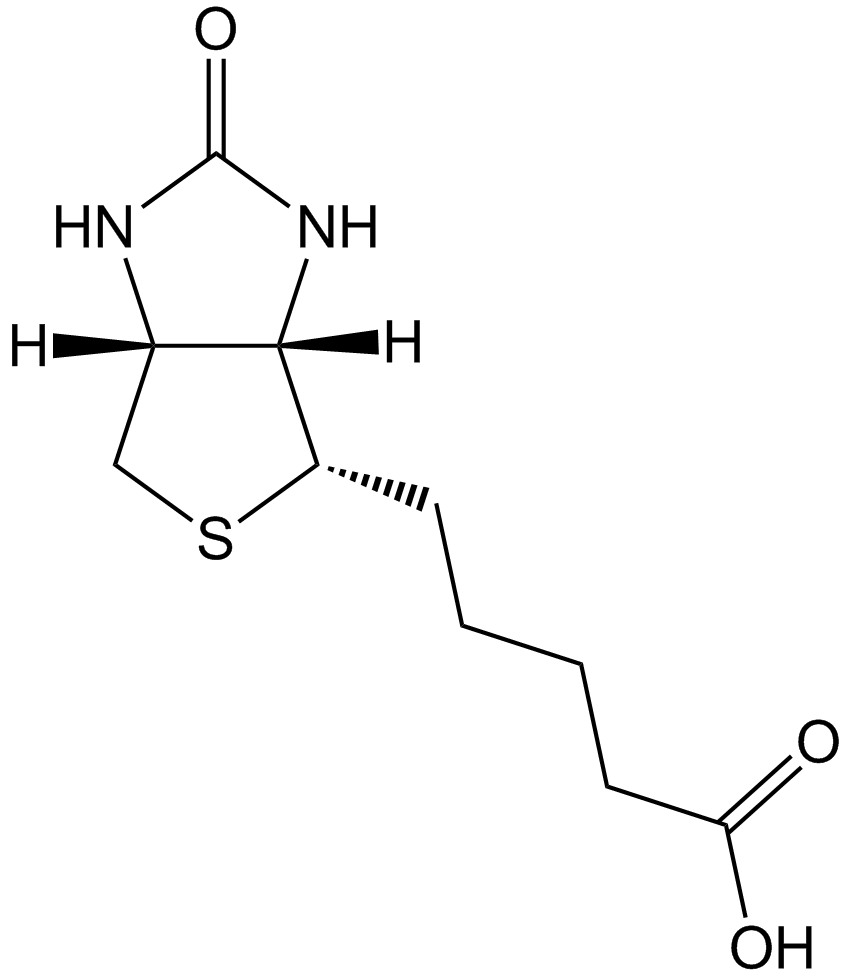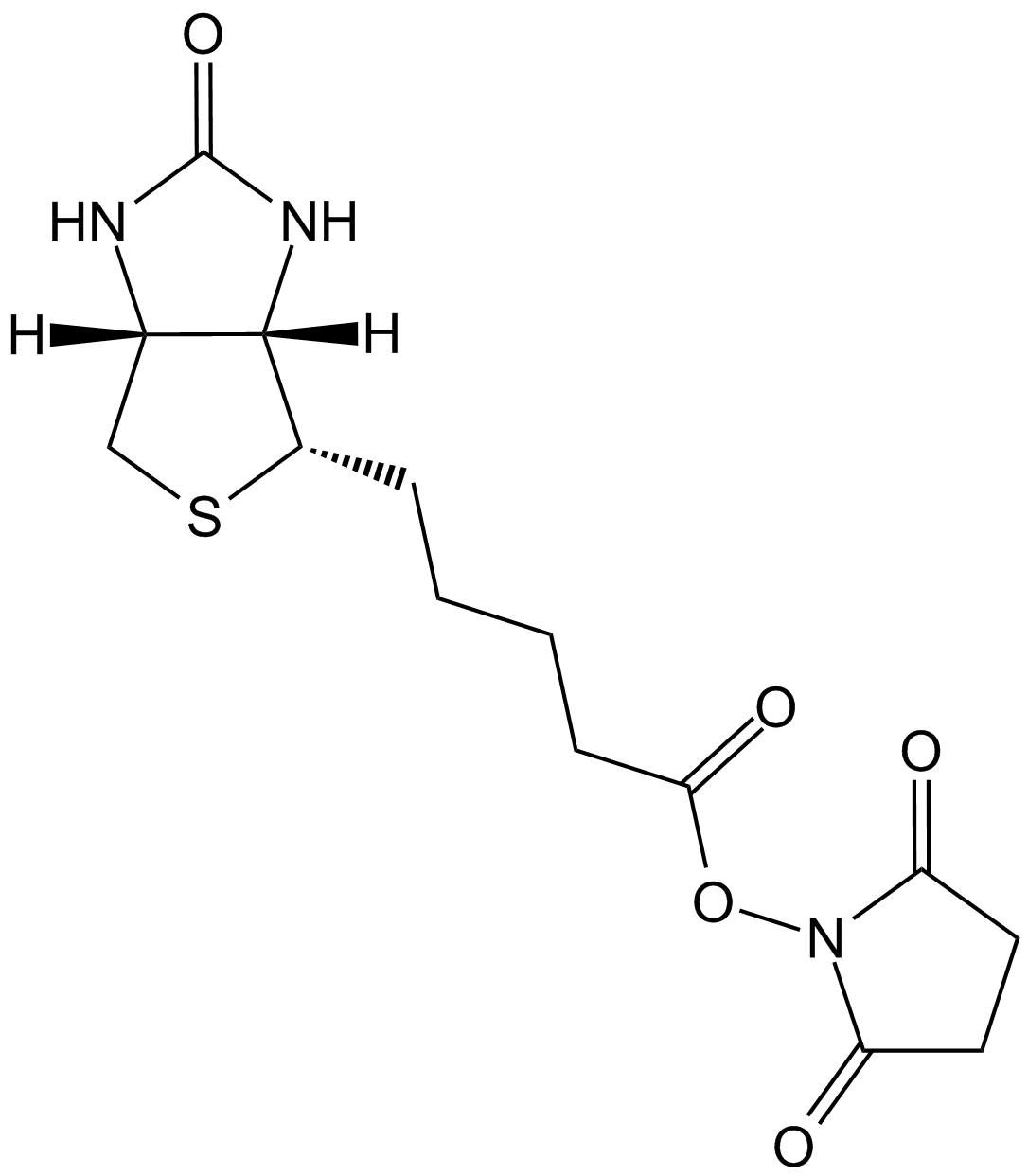Biotin-HPDP
Biotin-HPDP (N-[6-(biotinamido)hexyl]-3’-(2’-pyridyldithio)propionamide), a sulfhydryl-reactive biotinylation agent, is a water-insoluble reagent that requires the dissolution of suitable solvents, including dimethyl sulfoxide (DMSO) and dimethylformamide (DMF), prior to the addition into aqueous reactions. Biotin-HPDP consists of a bicyclic biotin rings structure, a 1,6-diaminohexane spacer group attached to the valeric acid side chain of biotin and a sulfhydryl-reactive group at the end of the spacer. The pyridyl disulfide group at the end of biotin-HPDP is able to react with free thiol groups on proteins and other molecules forming a disulfide bond and releasing pyridine-2-thione. The long spacer arm of biotin-HPDP enables the modified molecule to better bind to the avidin or streptavidin probes.
Reference
Bioconjugate Techniques , 2nd ed. By Greg T.Hermanson (Pierce Biotechnology, Thermo Fisher Scientific, Rockford, IL). Academic Press (an imprint of Elsevier): London, Amsterdam, Burlington, San Diego . 2008. ISBN 978-0-12-370501-3.
- 1. Xuelian Wu, Anqi Du, et al. "Hydrogen sulfide promotes lateral root formation in peach through persulfidation of SnRK1α kinase." Plant Biotechnol J. 2025 Jul 4 PMID: 40614108
- 2. Shi-Zheng Jia, Yu Li, et al. "Selenoprotein KConfers Protection against Iron Dyshomeostasis-RelatedNeurotoxicity by Regulating the Palmitoylation of TfR‑1." J Agric Food Chem. 2025 May 21;73(20):12233-12246. PMID: 40296316
- 3. Christopher R Brown, Madhur Shetty, et al. "Palmitoylation regulates norepinephrine transporter uptake, surface localization, and total expression with pathogenic implications in postural orthostatic tachycardia syndrome." J Neurochem. 2024 Oct 12. PMID: 39395208
- 4. Xiuyun Zhang, Junpeng Hou, et al. "zDHHC3-mediated S-palmitoylation of SLC9A2 regulates apoptosis in kidney clear cell carcinoma." J Cancer Res Clin Oncol. 2024 Apr 15;150(4):194. PMID: 38619631
- 5. Jia Tong, Jingjing Gao, et al. "GABAAR-PPT1 palmitoylation homeostasis controls synaptic transmission and circuitry oscillation in CLN1 disease." bioRxiv. March 29, 2024.
- 6. Christopher R Brown, James D Foster, et al. "Palmitoylation regulates norepinephrine transporter trafficking and expression and is potentially involved in the pathogenesis of postural orthostatic tachycardia syndrome." bioRxiv. 2024 Mar 27:2024.03.22.586171. PMID: 38585862
- 7. Guoli Song, et al. "SELENOK-dependent CD36 palmitoylation regulates microglial functions and Aβ phagocytosis." Redox Biol. 2024 Apr:70:103064. PMID: 38320455
- 8. Jun Yang, et al. "Palmitoylation of PKCδ by ZDHHC5 in hypothalamic microglia presents as a therapeutic target for fatty liver disease." Theranostics. 2024 Jan 1;14(3):988-1009. PMID: 38250049
- 9. Ting Wu, Shang-Tong Li, et al. "Mapping protein direct interactome of oxidoreductases with small molecular chemical cross-linkers in live cells." Redox Biol. 2023 May:61:102642. PMID: 36863169
- 10. Kogut, Jordan. "The Molecular Mechanisms of Glycolytic Enzyme Palmitoylation." University of Guelph.
- 11. Qi Qi, Hongjie Pan, et al. "A novel posttranslational modification of histone, H3 S-sulfhydration, is down-regulated in asthenozoospermic sperm." J Assist Reprod Genet. 2021 Dec;38(12):3175-3193. PMID: 34664184
- 12. Xiaoshi Liu, Min Li, et al. "An ABHD17-like hydrolase screening system to identify de-S-acylation enzymes of protein substrates in plant cells." Plant Cell. 2021 Oct 11;33(10):3235-3249. PMID: 34338800
- 13. Luo M, Li S, et al. "Enhanced Propulsion of Urease-Powered Micromotors by Multilayered Assembly of Ureases on Janus Magnetic Microparticles." Langmuir. 2020;10.1021/acs.langmuir.9b03315. PMID: 32023066
- 14. Bahat A, Lahav O, et al. "Targeting Spt5-Pol II by Small-Molecule Inhibitors Uncouples Distinct Activities and Reveals Additional Regulatory Roles." Mol Cell. 2019 Sep 25. pii: S1097-2765(19)30663-X. PMID: 31564557
- 15. Wei CHEN, Fang-Ling ZHAN, et al. "Detection of S-palmitoylated Proteins in Mouse Heart Tissue Based on Different Precipitation Methods." Chinese Journal of Analytical Chemistry Volume 47, Issue 1, January 2019, Pages 30-37
- 16. Das S, Shklyaev OE, et al. "Harnessing catalytic pumps for directional delivery of microparticles in microchambers. "Nat Commun. 2017 Feb 17;8:14384. PMID: 28211454
- 17. Ortiz-Rivera, Isamar, et al. "Convective flow reversal in self-powered enzyme micropumps." Proceedings of the National Academy of Sciences 113.10 (2016): 2585-2590. PMID: 26903618
- 18. Sambeeta Das. "DESIGNS FOR DIRECTING MOTION AT THE MICRO-AND NANOSCALE." The Pennsylvania State University.August 2016.
- 19. Isamar Ortiz‐Rivera, Taylor M.Courtney,Ayusman Sen. "Enzyme Micropump‐Based Inhibitor Assays." Advanced Functional Materials.April 5, 2016.
• Protein labeling—biotinylate antibodies or other proteins for use in protein methods
• Thiol-reactive—reacts with sulfhydryls (-SH), such as the side-chain of cysteine (C)
• Pyridyldithiol-activated—perform reactions at pH 6.5 to 7.5 in buffers such as PBS
• Reversible—forms disulfide bonds, which can be cleaved using DTT or other reducing agent
• Solubility—water insoluble, must be dissolved in DMSO or DMF before further dilution in aqueous buffers
• Medium length—spacer arm is 29.2 angstroms
| Physical Appearance | A solid |
| Storage | Store at -20°C |
| M.Wt | 539.78 |
| Cas No. | 129179-83-5 |
| Formula | C24H37N5O3S3 |
| Synonyms | BiotinHPDP |
| Solubility | insoluble in H2O; ≥33.47 mg/mL in DMSO; ≥8.29 mg/mL in EtOH with ultrasonic |
| Chemical Name | 5-[(3aS,4S,6aR)-2-oxo-1,3,3a,4,6,6a-hexahydrothieno[3,4-d]imidazol-4-yl]-N-[6-[3-(pyridin-2-yldisulfanyl)propanoylamino]hexyl]pentanamide |
| SDF | Download SDF |
| Canonical SMILES | C1C2C(C(S1)CCCCC(=O)NCCCCCCNC(=O)CCSSC3=CC=CC=N3)NC(=O)N2 |
| Shipping Condition | Small Molecules with Blue Ice, Modified Nucleotides with Dry Ice. |
| General tips | We do not recommend long-term storage for the solution, please use it up soon. |
| Biotinylation method [1]: | |
|
Sample |
S-nitrosylated proteins |
|
Preparation method |
Soluble in DMSO or DMF. |
|
Reaction Conditions |
50mM, 25 ℃ for 1 h |
|
Applications |
Prepare biotin-HPDP as a 50mM suspension in DMSO, Dilute with DMF to a final concentration of 4 mM. Add 1:3 volume of Labeling Solution and 1:50 volume of Ascorbate Solution(50mM) to the blocked protein samples, incubate for 1 hour at 25°C. After that, add two volumes of −20°C acetone and incubate for 20 min at −20°C to remove the biotin-HPDP. At last, Add 15 µl of packed streptavidin-agarose per mg of protein used in the initial protein sample, to purify biotinylated proteins. Incubate the biotinylated proteins with the resin for 1 hour at room temperature. Wash the beads five times with 10 volumes of Neutralization Buffer + NaCl. Centrifuge at 200g for 5 s at room temperature between each wash. Incubate the beads with Elution Buffer to recover the bound proteins. To test for the protein of interest with specific antibodies in SDS-PAGE. |
|
References: [1].Samie R. Jaffrey and Solomon H. Snyder. The Biotin Switch Method for the Detection of S-Nitrosylated Proteins. Science’s stke.2015. |
|
| Description | Biotin-HPDP is a sulfhydryl-reactive biotinylation agent. | |||||
| Targets | ||||||
| IC50 | ||||||
Quality Control & MSDS
- View current batch:
Chemical structure
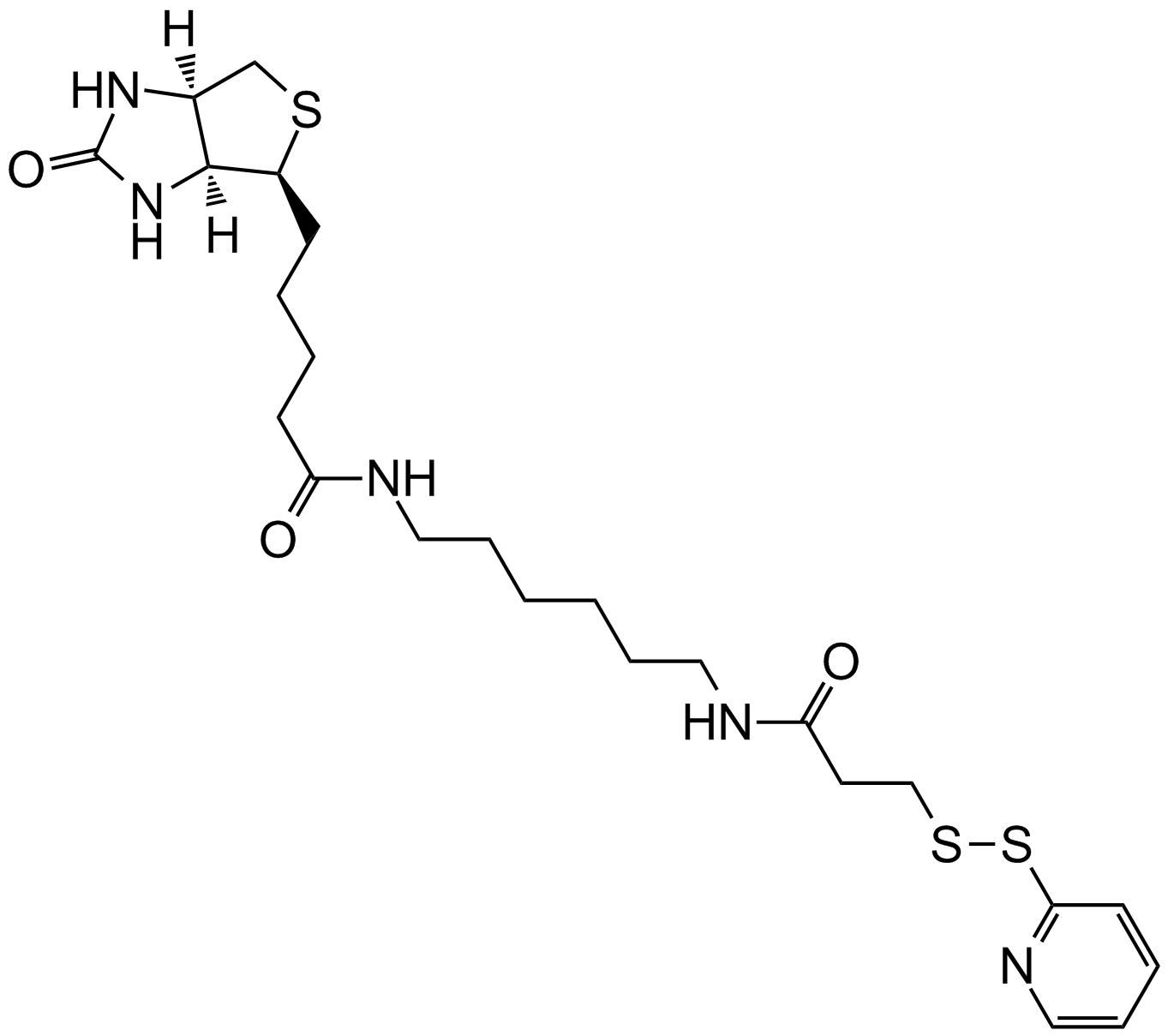
Related Biological Data
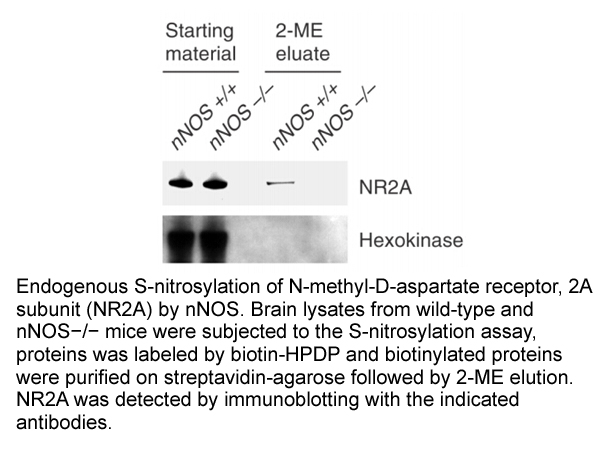
Related Biological Data
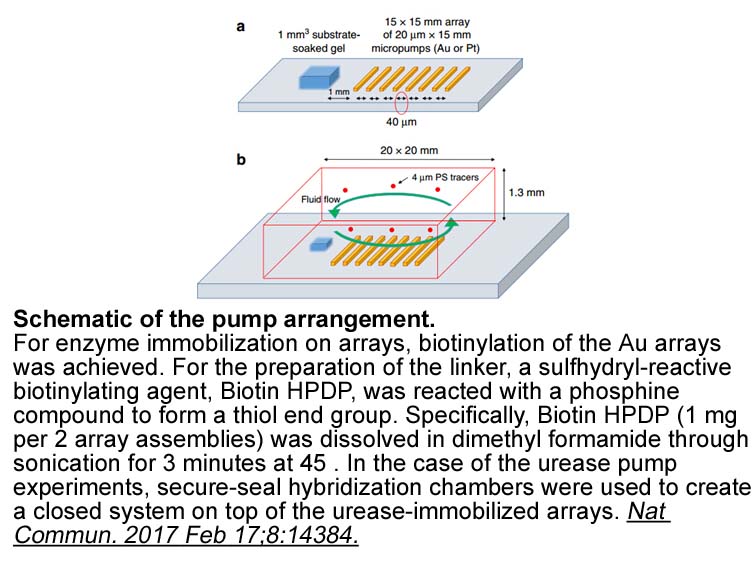
Related Biological Data
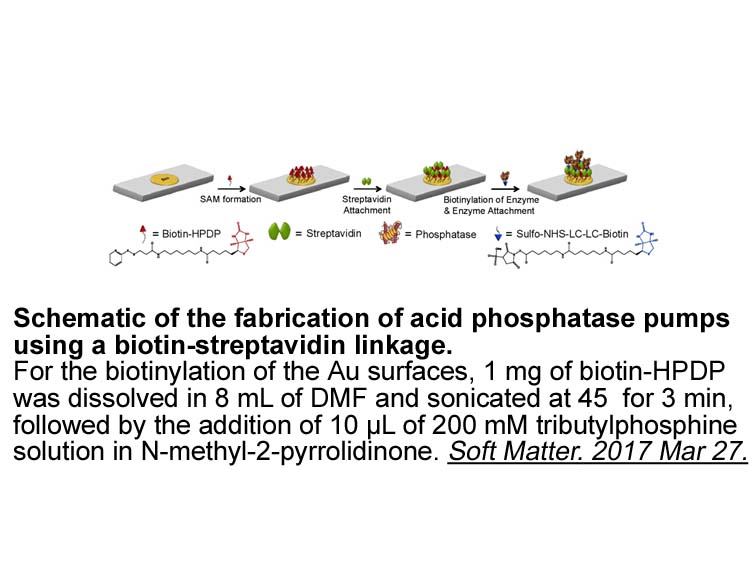
Related Biological Data
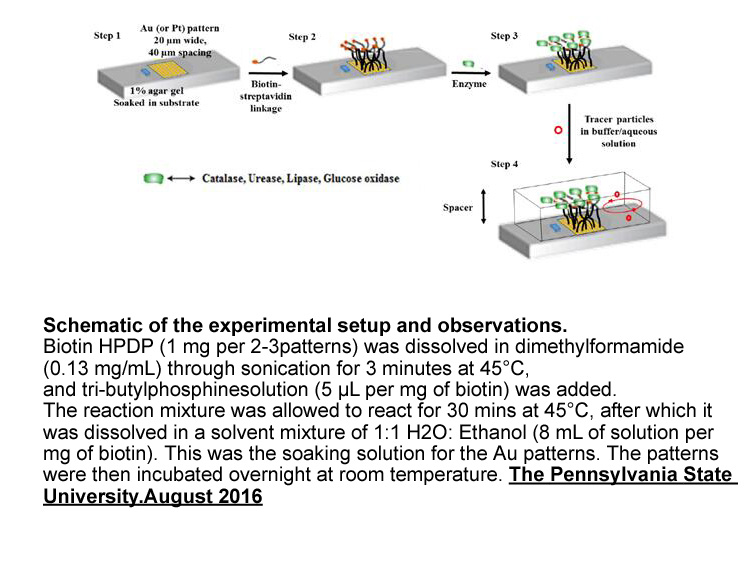
Related Biological Data
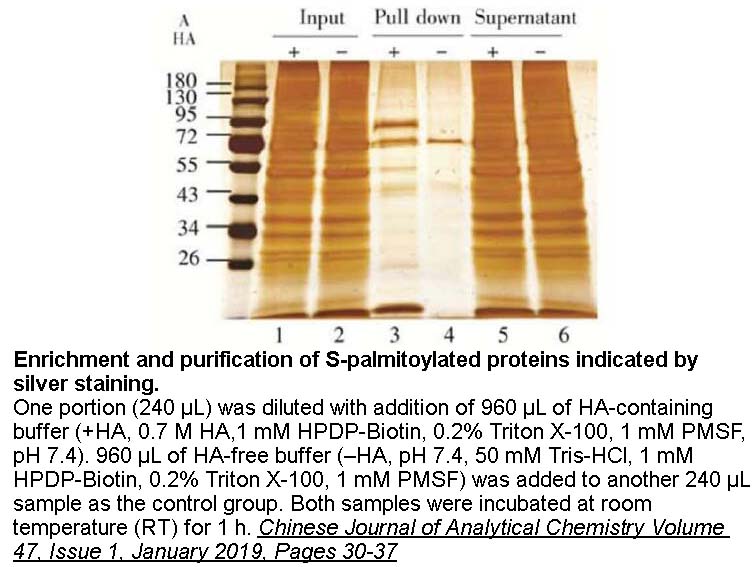
Related Biological Data
